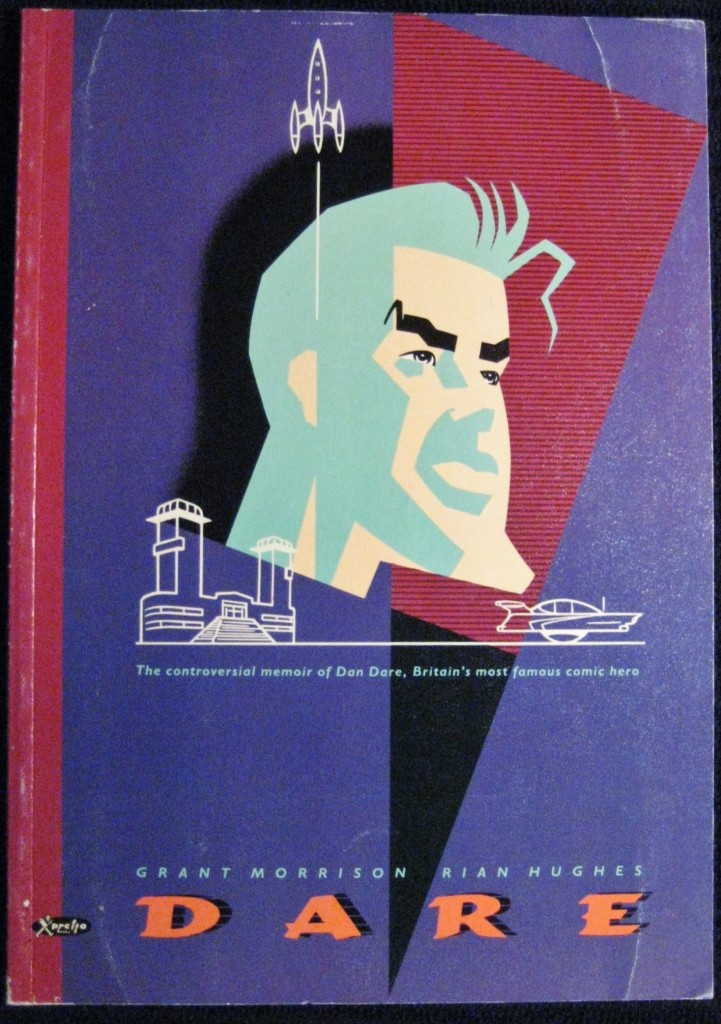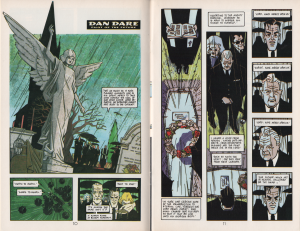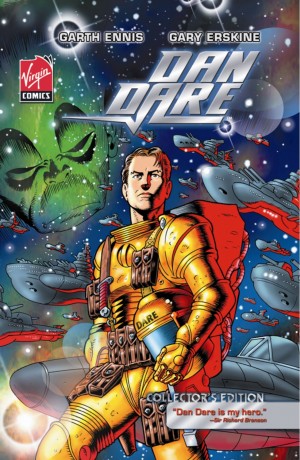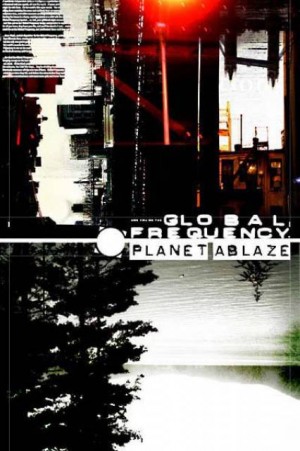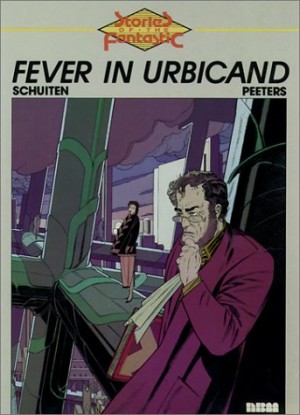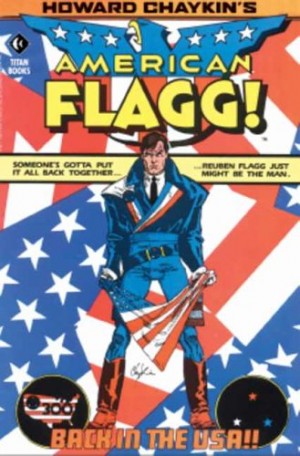Review by Graham Johnstone
Dan Dare, Britain’s 1950’s comic hero, has been reinvented a number of times. Grant Morrison and Rian Hughes’ version has it’s roots in 1980s Britain under the divisive government of Margaret Thatcher, so a product of it’s time, but still as relevant in 2016.
Dan Dare was created for Eagle – a British weekly edited by Church of England vicar, Marcus Morris. It aimed to promote Christian values, and be a wholesome alternative to the crime and horror comics arriving from America. Eagle was a huge success, largely due to Dare, with Frank Hampson’s painstakingly realistic depictions of his characters and science fictional settings. The 1950s saw massive state investment in housing, health and public infrastructure. People could believe in a bright future delivered by benevolent authorities, and the innate fairness and decency of Britain. Hampson’s Dan Dare took these values into the fictional future and outer space.
When Morrison and Hughes created Dare, Britain was ten years into a controversial Conservative government dismantling the state and the earlier social gains. They were slowly privatising health care, and selling off the fuel, water and railways. They forced local government to sell their housing – took the money and left them paying the mortgages. Morrison imagined Hampson’s characters in these darker times. Prime Minister Gloria Monday even looks like Thatcher. Those who survived those times will sense Morrison’s deep rage at the inequality and injustice – the powerful here care only about their positions and power. In his St. Swithin’s Day, from the same period, the protagonist actually plans to kill Thatcher.
It begins with Judge Dredd style police demanding access to a safety deposit box, which contains the journals of retired astronaut and faded icon Colonel Dare. Meanwhile Dare is hearing of the death of former colleague, scientist Jocelyn Peabody. These events, of course, turn out to be related. In this Britain, there are people starving (in “the North”, anyway), and Peabody was working on the claimed miracle food Manna, about which she had deep misgivings. Digby, Dare’s old batman, is back in the North, and more directly opposing the government. Earnest optimist Dare is the last of his old cast to catch up with reality. Can he even trust his old mentor Sir Hubert Guest!? The central character story here is of Dare’s changing view of the world, and his response.
None of Dan Dare’s revivals captured the look of the original, and Rian Hughes here does something quite different. His career encompasses illustration, typography, and design, and all these interests come across in his distinctive artwork. His strengths are bold layouts, stylish settings, and powerful single images – the first shots of Dare walking his dog as a modern plane hurtles overhead, and resting in front of his 1950s fire-place are instantly memorable. If the talking head scenes are in comparison somewhat perfunctory, it’s a fair trade-off. His flat painted colours enhance the retro-futurist Art Deco stylings.
A back cover blurb from left-field events guide Time Out describes Dare as “iconoclastic”. At the time, that was a helpful recommendation for readers new to graphic novels, and the critical re-appropriation of their past. This doesn’t aim to destroy Dan Dare – it’s an individual take on him, but it’s genuinely rooted in and respectful of the original. This is credibly Hampson’s characters responding to a changed world around them – indeed a betrayal of their basic values.
This edition is out of print, but used copies are affordable. It’s also included in Hughes’ retrospective Yesterday’s Tomorrows.
